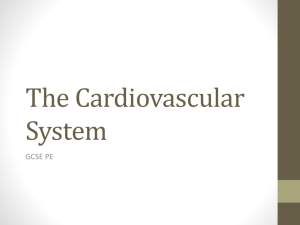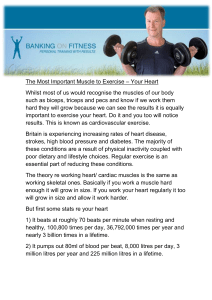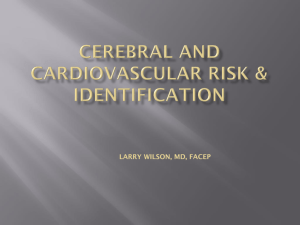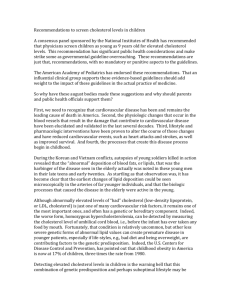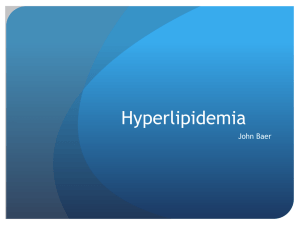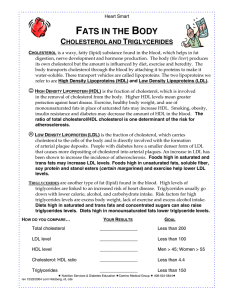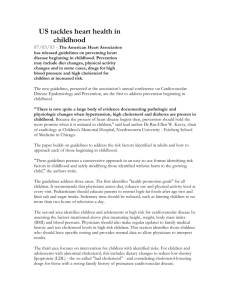Exercise the Medicine of Choice Reducing Cardiovascular Risk Dr
advertisement
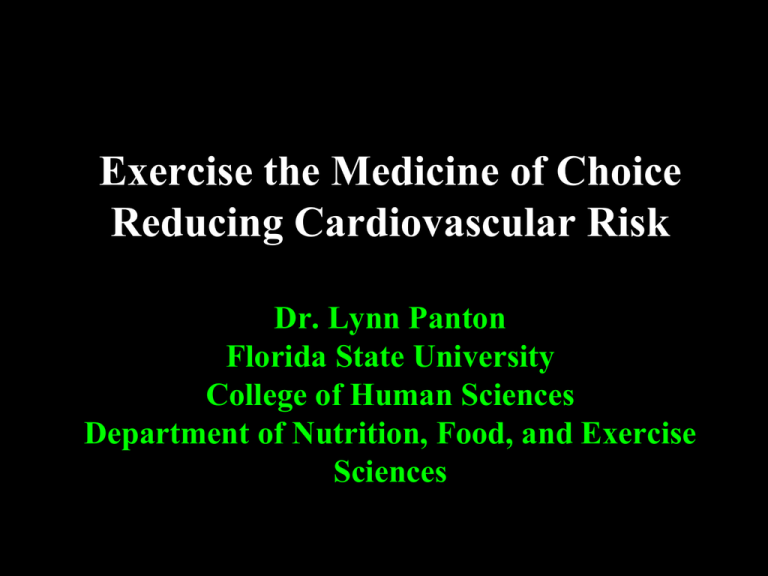
Exercise the Medicine of Choice Reducing Cardiovascular Risk Dr. Lynn Panton Florida State University College of Human Sciences Department of Nutrition, Food, and Exercise Sciences Surgeon General States…. “Inactivity is detrimental to your health!” Physical Activity and Health. A Report of the Surgeon General. U.S. Department of Health and Human Services. 1996. Physical activity can… ↓ cardiovascular disease risk factors ↓ cholesterol and ↑ good cholesterol (HDL) ↓ blood pressure ↓ blood sugar and type II diabetes ↓ weight and abdominal obesity ↓ risk of some cancers ↓ breast cancer ↓ colon cancer may ↓ risk of endometrial and lung cancer improve mental health and mood ↑ ability to perform activities of daily living ↑ balance to prevent falls ↓ risk of dementia ultimately ↑ chances of living longer disease free and improve the quality of life Relationship Between Cholesterol Levels and Cardiovascular Disease Mortality Classification of Low (LDL) and High Density Lipoprotein (HDL) Cholesterol LDL Cholesterol Classification <100 mg/dL Optimal 100-129 mg/dL Near Optimal 130-159 mg/dL Borderline high 160-189 mg/dL High > 190 mg/dL Very High HDL Cholesterol Classification <40 mg/dL (0.9 mmol/L) Low HDL cholesterol Benefits of Exercise Exercise has been shown to increase good cholesterol (HDL). Exercise can decrease triglycerides. Exercise with diet modification can decrease the bad cholesterol (LDL). Exercise can also help decrease medication that is being taken for high cholesterol. Blood Pressure Optimal Prehypertension Systolic <120 120-139 Hypertension: Stage 1 Stage 2 140-159 > 160 or and and or Diastolic <80 80-89 90-99 > 100 High Blood Pressure 50 million adults in the U.S. have high blood pressure. 60% of people over the age of 60 years have high blood pressure. Only 68% are aware of their condition. Only 54% are being treated. Only 27% have it under control. High Blood Pressure Even individuals in high normal range have 50% greater risk for cardiovascular disease. High blood pressure may place women at greater risk for heart disease than men. Recent studies show that systolic blood pressure has a greater influence on risk. Decreasing systolic blood pressure, even to only 150 mmHg, can reduce risk for heart failure, stroke, heart attack, renal disease, and mortality. Benefits of Exercise Exercise decreases both systolic and diastolic blood pressure. Exercise decreases the release of stress hormones. Exercise increases substances that increase vasodilatation (Nitric Oxide). Exercise helps in weight loss which will also bring down blood pressure. 10 lbs of weight loss can significantly reduce blood pressure. Exercise can reduce the amount of medication taken for blood pressure control.
